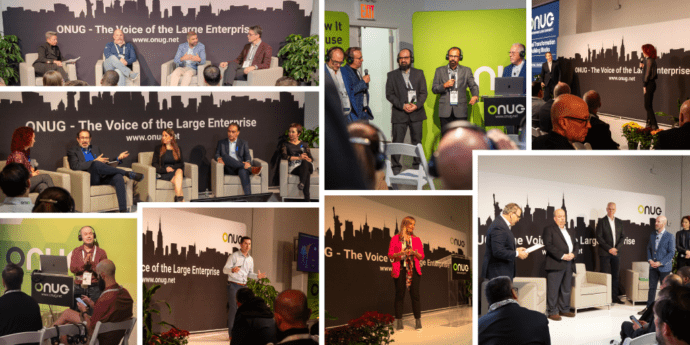Automating WAN Procurement: From Toil to Transformation
Wide Area Network (WAN) circuit costs consistently rank among the top ten line items in most enterprise IT budgets. Yet despite representing such a significant expenditure, WAN procurement remains one of the least automated areas in enterprise infrastructure management. The process is still dominated by manual RFPs, spreadsheets, vendor negotiations, and contract reviews—activities that consume months of staff time, introduce opacity, and lock organizations into outdated pricing models.
In an era where compute and storage can be provisioned in minutes through cloud platforms, the procurement of WAN services feels decades behind. It’s a paradox: enterprises have modernized nearly every other aspect of their infrastructure operations, but WAN procurement remains stubbornly slow, opaque, and costly.
Imagine a Different Future
What if enterprises could simply enter the locations where connectivity is required into an application and instantly see available service options? What if diversity requirements could be specified and fulfilled automatically? What if circuits could be ordered directly through the platform, with a tracking system providing end-to-end visibility until installation?
Beyond new orders, imagine being able to see your entire WAN estate at a glance: which circuits are in contract, which are out of contract (yet still being billed), which are overpriced compared to market rates, or which are no longer used but continue draining budgets.
This is the vision behind the ONUG Collaborative’s WAN Services Application—a community-driven initiative to transform WAN procurement from a slow, human-heavy process into an agile, automated, and transparent system.
The Solution: The WAN Services Application
The ONUG Collaborative, representing some of the world’s largest enterprises, has launched the WAN Connectivity API project to build an open, enterprise-driven framework for WAN service procurement.
The application and API will provide:
- Instant WAN route discovery – visibility into global connectivity options, both terrestrial and non-terrestrial.
- Standardized service attributes – agreed definitions for latency, jitter, SLA, path diversity, and more.
- Automated sourcing – eliminating inefficient RFP cycles.
- Transparent pricing – enabling multi-provider comparisons and market-rate validation.
- Lifecycle visibility – from order placement to provisioning to performance monitoring.
By unifying service discovery, specification, ordering, telemetry, and governance into a common framework, the application creates the equivalent of a “Google Flights” for WAN services. Enterprises gain a single control pane to design, purchase, and manage WAN connectivity as easily as they do cloud resources.
Why Now?
The timing could not be more urgent. Cloud adoption, AI workloads, and real-time data flows are accelerating the demand for agile and elastic networks. Legacy WAN procurement models—often five-year contracts negotiated after months of RFP exchanges—block the business agility enterprises require.
Meanwhile, carriers themselves face shrinking margins as MPLS revenues decline. For them, API-driven procurement offers efficiency, cost reduction, and new market reach. By collaborating through ONUG’s vendor-agnostic community, both buyers and providers win.
Five Key Benefits
- Cost Savings and Transparency
Enterprises can identify circuits that are out of contract, overpriced, or unused—saving millions annually by eliminating waste and renegotiating based on real market data. - Speed and Agility
What once took months through manual RFPs can be accomplished in hours. Enterprises can respond to changing business requirements, mergers, or AI-driven workload shifts with on-demand connectivity. - Improved Reliability and Diversity
The application enables easy specification of path and provider diversity, reducing outage risk and improving resilience. - Operational Efficiency
Procurement staff and network teams are freed from repetitive tasks. Automation reduces toil, enabling staff to focus on higher-value activities like architecture, security, and innovation. - Ecosystem Growth and Innovation
A standardized API encourages carriers, cloud providers, and integrators to innovate while preserving interoperability. It also sets the stage for a marketplace where enterprises can buy, sell, and optimize connectivity dynamically.
Community-Driven, Open, and Practical
The WAN Services Application is not being designed in isolation. It is being developed by the ONUG Collaborative—a forum of Global 2000 enterprises, cloud providers, service providers, and technology vendors. The working group is chaired by IT executives from Citi and Evernorth, with contributions from leaders across finance, pharma, tech, and beyond.
The goal is pragmatic: build a minimum viable product quickly, demonstrate it at ONUG events, and expand iteratively. A buyer’s guide will follow, helping enterprises incorporate the framework into their RFPs and procurement systems.
And here’s the exciting part: we will be demonstrating the art of the possible at the AI Networking Summit in New York City on October 22–23. This is a demonstration you will not want to miss.
Conclusion
WAN services represent one of the last great frontiers of IT automation. By bringing the same agility and transparency to network procurement that cloud platforms brought to compute and storage, enterprises can unlock massive savings and transform how their networks support the business.
The ONUG Collaborative’s WAN Services API and framework is the community’s answer: built by the enterprise, for the enterprise. It promises not just to modernize WAN procurement but to redefine how global connectivity is consumed in the AI era.


